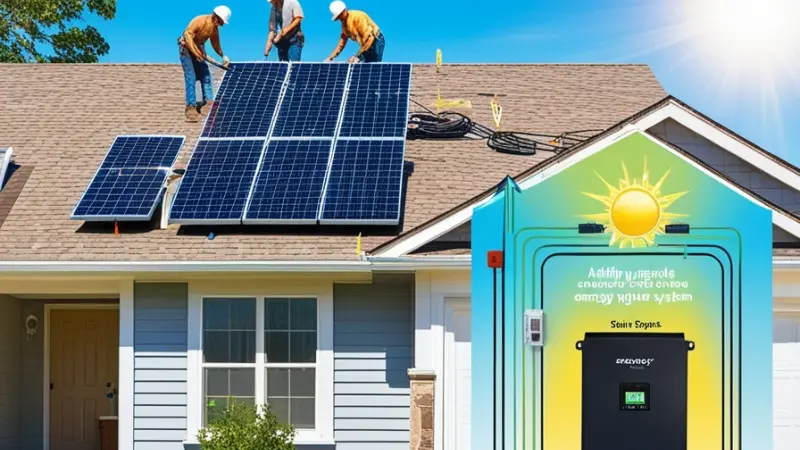Boost Your Solar Power: When adding solar panels to existing system
Updated: 13 Sep 2024
29
In this guide, if you are thinking of increasing your power with a solar panel by installing one adjacent to an existing setup, congrats, you have landed on the right page. So in this article, we will discuss when it is necessary to add more solar systems, what factors are to be considered, and ways of increasing efficiency and yield. If you are experiencing a necessitating energy situation or desiring a green energy solution, then expanding solar opportunities could be the best solution.

Do you pay a higher bill for energy even if you have a solar system and collectors? While incorporating solar panels into the existing systems may seem like the most feasible solution it is not always as simple as it sounds. Here, we’ll outline the possibly associated risks and advantages of extending your solar configuration so that you can decide whether it is the right time to invest in this upgrade.
Adding solar panels to an existing system: When is it worth it?
It may benefit an existing system to integrate solar panels should the energy demands have risen or when the initial installation of solar was done on a smaller scale. You might be wondering if you would like further reduction of your electricity bills or just adding sustainability to your home. However, prospective studies have to be done in terms of the costs that are involved and the compatibility of linking additional solar panels to the existing systems.
Can You Add Solar Panels To An Existing System?
Yes, it is possible to put solar panels in an existing system there are certain crucial factors to note. First of all, check with the current inverter capacity to see if it can take an extra load, otherwise, you will have to purchase a new one. It is also important that new panels should be compatible with the existing ones- in terms of voltage and efficiency. Finally, calculate if increasing the number of panels within the system will still allow you to meet the local allowable grid connection standards.
Estimating How Many Solar Panels to Install in a House
Therefore, in deciding how many solar panels to install in a house several factors come into consideration including energy use, roof space, and amount of light in the region. Your first step should be to determine your home’s annual energy usage in kilowatt hours or kWh. The second is to find out the degree of yield per kilowatt of solar capacity in the region. This data enables you to gauge the number of panels required and averages approximated to be in the range of 20-24 which guarantees full independence of the home’s grid, board’s energy demands, and efficiency of the panels.
What to watch out for
But as electronic devices become integrated into an existing system, there are some points to pay attention to. First of all, check whether they match the rest of your system in terms of voltage and current rates, if not find ones that do. Also, confirm if your inverter is capable of dealing with the required load or if you ought to acquire a new one. Be careful with the design of your roof and be sure it will be able to carry the additional mass. It is also necessary to assess how shading may be having an impact that could impact the efficiency of the new panels. Finally, you have to contact your utility company to discuss possible alterations to rules or policies regarding net metering which may affect your efficiency.
Available Roof Space for Solar Panels
The area of rooftop available for the installation of solar panels is an important consideration to be taken into account. First of all, it defines the number of panels that you are capable of installing, and secondly, it influences the efficiency of the system in general. In an ideal case, you will require sufficient space to mount the panels so they can capture the sun at different points of the day. Sections that require shading or any object such as a chimney interfere with the system’s operation should not be used. Also, the exposure and slope of the roof have a great influence; facing south and having the slope corresponding to the geographical latitude of the area is mostly ideal. If there is not much space on the roof available, then high-rate efficiency panels may be required or you may have to look at grounds-mounted systems to generate enough power.
Conclusion
Differences in the original PV system and analog, a bar of available roof area, and the expense-efficiency ratio are critical when considering installing new solar panels to an individual system. Concerning challenges like compatibility or decreased incentives all the shifts and careful planning can improve the energy-saving rates that make solar expansion a good long-term decision.
Please Write Your Comments